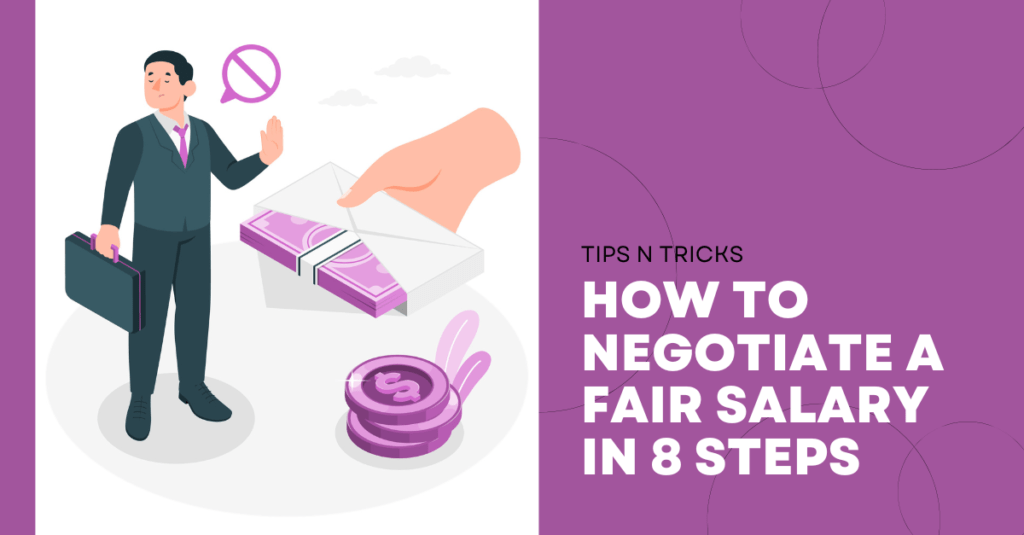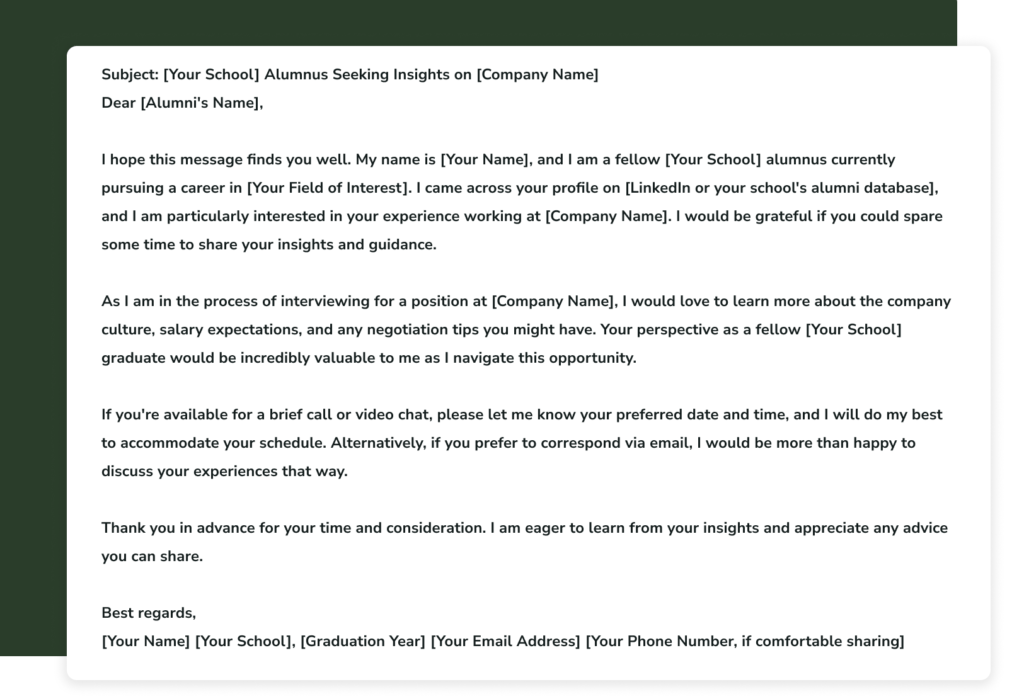This presents both opportunities and challenges when it comes to Negotiate a Salary on LinkedIn. Traditionally taboo, discussions around salary are becoming more mainstream on social platforms like LinkedIn.
In this comprehensive guide, we will cover proven tips and strategies to effectively negotiate your salary and benefits when going through the LinkedIn recruitment process.
Table of Contents
The Importance of Salary Negotiation
Negotiating your salary is critical for several reasons:
- It maximizes your earning potential and gets you paid fairly.
- It ensures alignment between you and the employer on expectations.
- It establishes your value and personal brand from the start.
- It sets the benchmark for future salary increases and promotions.
Avoid accepting the first offer presented to you. Evaluate your worth and negotiate to get the ideal compensation.
Also Read – Does LinkedIn Learning Give Certificates? The Definitive Guide
How to Negotiate Salary on LinkedIn in 8 Steps

Here is a step-by-step process to negotiate your salary successfully on LinkedIn:
1. Research Expected Salaries
Use LinkedIn Salary and Pay Insights tools to research the typical pay range for your role, experience level, and location. This gives you a benchmark.
2. Assess Your Value
Evaluate your unique skills, achievements, credentials, and experience to assess your value relative to benchmark salaries.
3. Determine Your Minimum and “Dream” Salary
Decide the minimum salary you need for living costs along with a “dream” salary reflecting your maximum value.
4. Practice Your Pitch
Rehearse how you will convey your values, achievements, and expectations. Prepare examples and data to support your asks.
5. Time it Right
Wait until a job offer is made before negotiating to maximize leverage. Don’t discuss numbers too early.
6. Start High
Begin negotiations by asking 10-20% above your dream salary, leaving room to move lower.
7. Remain Flexible
If your ask is refused, consider requesting alternatives like more vacation time, remote work options, etc.
8. Get it in Writing
Secure any negotiated salary, benefits, or perks in your formal offer letter before accepting.
Preparation is key – do your homework regarding salaries and practice your pitch. Now let’s look at salary negotiation best practices in more detail.
Best Practices for Salary Negotiation on LinkedIn

Apply these best practices when negotiating your salary on LinkedIn:
Focus on Your Accomplishments
Showcase metrics and examples that highlight the tangible value you delivered in past roles.
Align With the Company’s Needs
Frame your experience and skills around solving the challenges outlined in the job description.
Convey Passion for the Role
Express genuine enthusiasm for the company and role so you’re seen as engaged, not just chasing compensation.
Use Salary Data Strategically
Reference industry salary reports to justify higher asks but don’t reveal your salary history.
Sell Your Strengths
Highlight unique capabilities only you can offer over other candidates. Why are you worth more?
Be Ready to Counteroffer
If your ask is refused, have a lesser counteroffer prepared versus accepting immediately.
Send a Thank You Note
After successfully negotiating, send a thank you message to reinforce your value and eagerness to join.
Don’t Make Ultimatums
Avoid aggressive tactics like threats to decline the role. Take a collaborative approach.
Watch Your Tone and Language
Come across as polite and professional, not entitled or demanding.
Consider the Whole Package
Look beyond just salary at bonuses, equity, retirement plans, etc. when negotiating.
Preparation and professionalism are vital to representing yourself effectively without alienating recruiters.
What to Do If Your Salary Ask is Refused

If your salary request is outright refused, consider these alternatives before walking away:
- Request a delayed salary review: Ask for a wage review in 6 months rather than immediately. Use the time to prove your value.
- Negotiate non-monetary perks: Discuss extra vacation time, work-from-home flexibility, professional development budget, etc.
- Seek a sign-on bonus: Push for an upfront lump sum bonus to make up for a lower salary.
- Look for accelerated promotions: Ask about fast-tracked promotions to increase your salary down the road.
- Get salary bumps tied to milestones: Make the case for pay raises upon hitting goals or metrics.
- Accept but keep looking: Take the role but continue seeking openings that better compensate for your skills.
With the right approach, many “refusals” can be gradually converted into improved salaries and perks.
Mistakes to Avoid When Negotiating Salary on LinkedIn

Steer clear of these common negotiation mistakes on LinkedIn:
- Discussing salary expectations too early
- Making unrealistic asks well above market rates
- Lacking supporting evidence for higher salary
- Negotiating before having a job offer
- Making threats or ultimatums about declining offers
- Getting confrontational, aggressive, or overly persistent
- Bringing up personal financial reasons for needing more money
- Steering negotiations towards salary alone too quickly versus discussing the role
- Skipping follow-up thank you notes after successful negotiation
- Accepting offers before securing negotiated terms in writing
- Revealing past salary history as justification for higher compensation
- Making exaggerated claims about achievements or skills
- Accepting the first offer without any negotiation
Salary negotiations need diplomacy and care. With the right preparation and professional approach, you can earn your true worth.
Also Read – How to Add Employees to LinkedIn Company Page: A Step-by-Step Guide
Salary Negotiation Tips for Specific LinkedIn Scenarios

Here is some tailored advice for negotiating salary in these LinkedIn recruitment scenarios:
Freelance Contract Roles
- Compare rates for similar LinkedIn freelance contracts in your field based on job posts.
- Assess the scope and timeline of the project and how much work it requires.
- Increase rates for rush projects with tighter deadlines.
- Factor in additional expenses you’ll incur beyond just time worked.
- Raise rates annually to keep pace with inflation and your increasing expertise.
Leadership Positions
- Review industry reports for C-level and executive salary ranges.
- Assess the company’s financial health. Growing, high-performing firms can afford higher leadership salaries.
- Make the case for your unique vision, strategy, and quantifiable wins in past leadership roles.
- Discuss compensation for hitting goals and growth benchmarks you will commit to.
Remote or Hybrid Roles
- Research typical salaries for similar remote roles during interviews.
- When making an ask, factor in the expanded scope or responsibilities of remote work.
- If relocating to a lower-cost location, make it clear you still expect equivalent big-city compensation.
- Request allowance for ergonomic home office setup and wifi costs.
- Negotiate more PTO to account for no commute time.
The right negotiation approach will differ based on the specifics of the role. Do your due diligence beforehand.
Negotiating Salary Outside of LinkedIn

While LinkedIn is being increasingly used for recruitment, salary discussions may happen outside the platform. Here are tips for other scenarios:
During Interviews
- Deflect specific salary questions until an offer is made. Say you are flexible or want to focus on the role first.
- If pressed, give a broad range based on your research to remain open to negotiation.
- Reiterate your interest in the overall opportunity – not just compensation.
With External Recruiters
- Ask about the salary range for the role upfront so you don’t waste time interviewing for roles below your needs.
- Be wary of recruiter claims that salaries are “non-negotiable” – test this directly with the employer.
- Politely disengage with recruiters bringing poor offers – don’t get confrontational.
Directly with Hiring Managers
- Build rapport with managers before negotiations to understand their priorities.
- Frame requests around helping you achieve goals they care about.
- Offer to connect them with former bosses who can vouch for your value.
- Be receptive to their concerns around budgets or tight approval processes.
No matter the platform or medium, stick to the principles of preparation, data, collaboration, and professionalism.
Building Long-Term Salary Leverage on LinkedIn

To maximize lifetime earnings, cultivate these long-term buffers:
- Keep your LinkedIn profile updated with new skills, achievements, and responsibilities.
- Build a robust professional network of former colleagues who can vouch for your contributions.
- Maintain visibility by engaging regularly on LinkedIn through posting and commenting.
- Accumulate in-demand certifications, credentials, and affiliations.
- Establish yourself as a thought leader by sharing insights and trends.
- Move strategically between companies to accelerate growth vs. stagnating in one role.
The more value you provide and personal brand equity you build, the greater your long-term salary negotiating power will become.
Samples of Salary Negotiation Messages on LinkedIn

Here are examples of polite, professional messages to use when negotiating salary on LinkedIn:
After Receiving a Low Offer
“Thank you so much for the offer. I am truly excited about the Analyst role and know I would thrive at Smith & Co. given my digital marketing background. While the compensation package is generous, it is lower than my current salary, and market research suggests the average rate for this position is $65K – $75K based on experience. I would be more comfortable accepting an offer in the range of $70K. I genuinely appreciate you reconsidering to better align with the market rate. I’m eager to finalize the details so we can get started, as this is my top choice role. Looking forward to your thoughts.”
Following Up After Negotiation
“John, wonderful talking to you earlier. Thank you for your willingness to increase the offer to $68K – I truly appreciate your flexibility and am thrilled to accept. Smith & Co is an ideal next step for me, and I cannot wait to hit the ground running. My start date works great. I’ll follow up with any paperwork needed to finalize. Have a great rest of your week, and looking forward to my first day!”
Remember, how you negotiate also represents your communication and relationship-building skills. Making it collaborative and win/win for both sides is key.
Also Read – LinkedIn vs. Instagram: Which Platform Has More Fake Smiles and Staged Office Backgrounds?
Don’t Leave Money on the Table – Know Your Worth and Negotiate

With higher change rates and mobility, compensation should match your true market value. Make negotiation a priority rather than taboo.
Hopefully, this guide has equipped you to effectively research, evaluate, and negotiate salary offers from LinkedIn opportunities. Be prepared, be objective, and be personable.
The right negotiation approach demonstrates self-awareness around your skills while understanding the needs of the employer. With some finesse, you can certainly earn what you deserve. Just remember, the worst they can say is no. Often, a polite “no” simply opens the door for alternatives.
So as you pursue new roles on LinkedIn, leverage these strategies to negotiate win-win compensation that helps propel your career forward. Go get paid!







